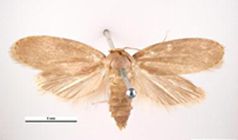|
Scientific name: Galleria mellonella
EPPRD Category:
Life Form: Butterflies & moths (LEPIDOPTERA)
Pest Documents
FS: fact sheet
CP: contingency plan
DP: diagnostic protocol

|
Scientific name: Galleria mellonella
EPPRD Category:
Life Form: Butterflies & moths (LEPIDOPTERA)
FS: fact sheet
CP: contingency plan
DP: diagnostic protocol

Recent Comments